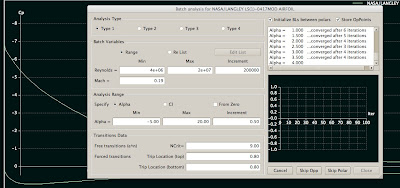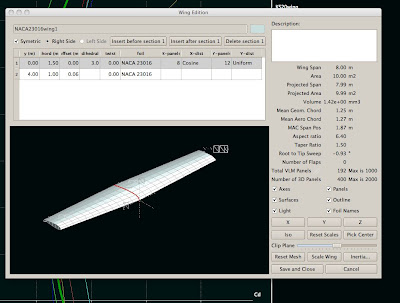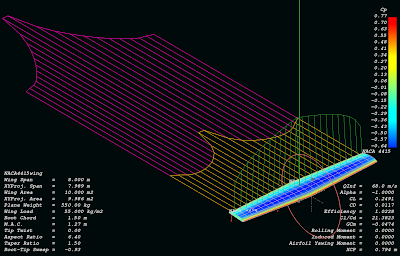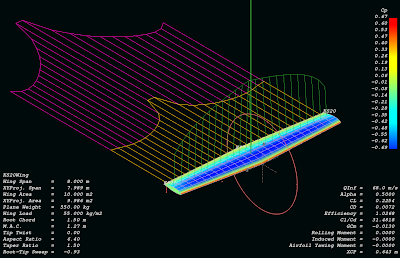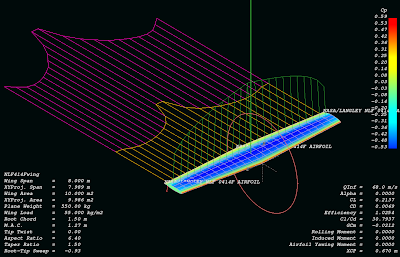In designing an aircraft, a great deal of effort is spent in developing the desired degree of stability around all three axes. But longitudinal stability about the lateral axis is considered to be the most affected by certain variables in various flight conditions.
Longitudinal stability is the quality that makes an aircraft stable about its lateral axis. It involves the pitching motion as the aircraft’s nose moves up and down in flight. A longitudinally unstable aircraft has a tendency to dive or climb progressively into a very steep dive or climb, or even a stall. Thus, an aircraft with longitudinal instability becomes difficult and sometimes dangerous to fly.
Static longitudinal stability or instability in an aircraft, is dependent upon three factors:
1. Location of the wing with respect to the CG
2. Location of the horizontal tail surfaces with respect to the CG
3. Area or size of the tail surfaces
In analyzing stability, it should be recalled that a body free to rotate always turns about its CG.
To obtain static longitudinal stability, the relation of the wing and tail moments must be such that, if the moments are initially balanced and the aircraft is suddenly nose up, the wing moments and tail moments change so that the sum of their forces provides an unbalanced but restoring moment which, in turn, brings the nose down again. Similarly, if the aircraft is nose down, the resulting change in moments brings the nose back up.
The CL in most asymmetrical airfoils has a tendency to change its fore and aft positions with a change in the AOA. The CL tends to move forward with an increase in AOA and to move aft with a decrease in AOA. This means that when the AOA of an airfoil is increased, the CL, by moving forward, tends to lift the leading edge of the wing still more. This tendency gives the wing an inherent quality of instability. (NOTE: CL is also known as the center of pressure (CP).)

Figure 4-20 line CG-CL-T represents the aircraft’s longitudinal axis from the CG to a point T on the horizontal stabilizer.
Most aircraft are designed so that the wing’s CL is to the rear of the CG. This makes the aircraft “nose heavy” and requires that there be a slight downward force on the horizontal stabilizer in order to balance the aircraft and keep the nose from continually pitching downward. Compensation for this nose heaviness is provided by setting the horizontal stabilizer at a slight negative AOA. The downward force thus produced holds the tail down, counterbalancing the “heavy” nose. It is as if the line CG-CL-T were a lever with an upward force at CL and two downward forces balancing each other, one a strong force at the CG point and the other, a much lesser force, at point T (downward air pressure on the stabilizer). To better visualize this physics principle: If an iron bar were suspended at point CL, with a heavy weight hanging on it at the CG, it would take downward pressure at point T to keep the “lever” in balance.

Even though the horizontal stabilizer may be level when the aircraft is in level flight, there is a downwash of air from the wings. This downwash strikes the top of the stabilizer and produces a downward pressure, which at a certain speed is just enough to balance the “lever.” The faster the aircraft is flying, the greater this downwash and the greater the downward force on the horizontal stabilizer (except T-tails). [Figure 4-21] stabilizers, the aircraft manufacturer sets the stabilizer at an angle that provides the best stability (or balance) during flight at the design cruising speed and power setting.
If the aircraft’s speed decreases, the speed of the airflow over the wing is decreased. As a result of this decreased flow of air over the wing, the downwash is reduced, causing a lesser downward force on the horizontal stabilizer. In turn, the characteristic nose heaviness is accentuated, causing the aircraft’s nose to pitch down more. [Figure 4-22] This places the aircraft in a nose-low attitude, lessening the wing’s AOA and drag and allowing the airspeed to increase. As the aircraft continues in the nose-low attitude and its speed increases, force on the horizontal stabilizer is once again Consequently, the tail is again pushed downward into a climbing attitude.
Continues, the airspeed again decreases, causing force on the tail to decrease until the nose Because the aircraft is dynamically stable, lower as far this time as it did before. The enough speed in this more gradual dive to another climb, but the climb is not as steep as one.
These diminishing oscillations, in which rises and lowers, the aircraft finally speed at which the downward force on the counteracts the tendency of the aircraft to dive. is attained, the aircraft is once again in continues in stabilized flight as long as airspeed are not changed.
Noted upon closing the throttle. The wings is reduced and the force at T in Figure 4-20 is not enough to hold the horizontal stabilizer down. It seems as if the force at T on the lever were allowing the force of gravity to pull the nose down. This is a desirable characteristic because the aircraft is inherently trying to regain airspeed and reestablish the proper balance.


Power or thrust can also have a destabilizing effect in that an increase of power may tend to make the nose rise. The aircraft designer can offset this by establishing a “high thrust line” wherein the line of thrust passes above the CG. [Figures 4-23 and 4-24] In this case, as power or thrust is increased a moment is produced to counteract the down load on the tail. On the other hand, a very “low thrust line” would tend to add to the nose-up effect of the horizontal tail surface.
With CG forward of the CL and with an tail-down force, the aircraft usually tries to safe flying attitude.
Following is a simple demonstration of longitudinal Trim the aircraft for “hands off” control in level momentarily give the controls a slight push to aircraft down. If, within a brief period, the nose rises original position and then stops, the aircraft is statically Ordinarily, the nose passes the original position (that flight) and a series of slow pitching oscillations the oscillations gradually cease, the aircraft has stability; if they continue unevenly, the aircraft has stability; if they increase, the aircraft is unstable.
 As October draws to a close, the Croatian ministry for sea, transport and infrastructure has published the country’s airport figures for the month of September. Although some airports are reporting good growth, Zagreb is yet to stage a recovery. Other airports which are worse off than last year are Split, Dubrovnik and Pula. Meanwhile, Zadar, Osijek and Rijeka are reporting growth.
As October draws to a close, the Croatian ministry for sea, transport and infrastructure has published the country’s airport figures for the month of September. Although some airports are reporting good growth, Zagreb is yet to stage a recovery. Other airports which are worse off than last year are Split, Dubrovnik and Pula. Meanwhile, Zadar, Osijek and Rijeka are reporting growth.




.jpg)
.jpg)
.jpg)





.jpg)
.jpg)







.JPG)

.JPG)
.JPG)
.JPG)
.JPG)


.JPG)














